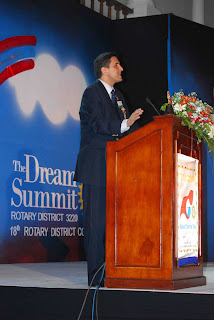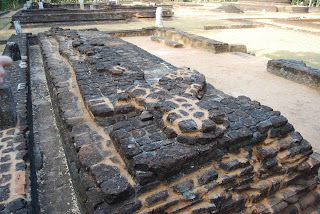 The team was reunited this evening for an casual dinner sponsored by District 7630 and it was great to see everyone again.
The team was reunited this evening for an casual dinner sponsored by District 7630 and it was great to see everyone again.Rotarians from around the district showed up to enjoy traditional American food with the team and to hear about our wondrous adventures! The team fielded questions for over an hour - it was a lot of fun to recount our journey. The questions were varied and touched on topics relating to religion, culture, business, economics, industry, Rotary club meetings, Rotary community projects, the educational system, the civil conflict, and of course elephants.
Due to a bit of a misunderstanding about who would provide the projector we were unable to show photos of our trip. In the coming days I will post photos online and provide links to them on this blog.
For those who didnt' get to see the elephant video or really want to see it again, here is a link to the elephant charge video - http://www.youtube.com/watch?v=ScvWDaWsxEA
Since my return home - this evening included - I've gotten a lot of questions about the civil conflict and my brief but rather direct experience with it. So here's my story: Lynsey and I were staying in Colombo with the Jafferjee family. It was Friday night around 9:00. We were getting ready to go out when suddenly the power went out. We didn't think much about it, actually we were a bit disappointed because we were without AC and it was darn hot. Not long into the outage we heard what sounded like gunshots, then heard and felt an explosion. After our stomachs flipped back around to their normal position, curiosity took us to the second floor porch where we saw anti aircraft fire in the sky. Periodically we heard gunshots, but for the most part we only saw red tracer fire crossing the night sky. It was so hot inside that Lynsey and I decided to brave the mosquitos as well as the unknown and sit out on the porch and watch the military fireworks. Within an hour or two all was quiet and power restored. Traffic was back on the streets and life in Colombo pretty much returned to normal. We immediately turned on CNN to try to find out what happened. I have since located the following links to articles with photos and videos which tell the story more accurately than I can: Javno, Townhall.com, Reuters, IBN Live, and Truveo. This page puts faces to the two LTTE pilots - Tamilnet.com.

















































